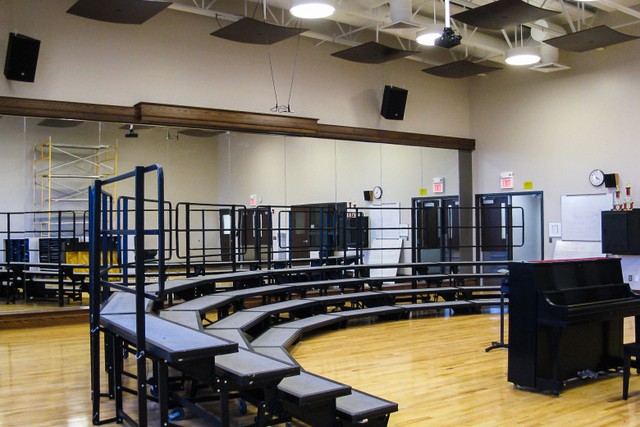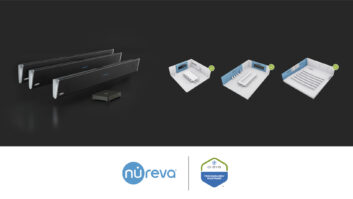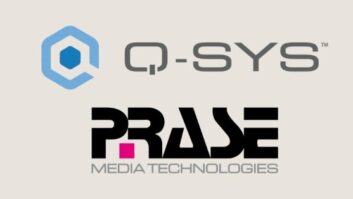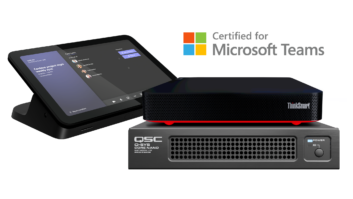
City High School in Iowa City, US, has opened a new performing arts wing featuring Q-Sys Core 250i integrated cores with QSC GX5 power amplifiers powering the installed loudspeakers. Ottumwa-based systems integrator, Douglass Communications, provided design and integration services for the installed sound systems in two music rehearsal rooms.
Built at a cost of over $6 million (€4.4 million), the new wing is designed to accommodate rehearsal rooms for the band, orchestra and choir as well as 500 students in the school’s music and performing arts programmes. In addition to the rehearsal rooms, the facility hosts a suite of smaller practice spaces, classrooms and other support amenities.
“We wanted a solution that would enable us to control everything off of an iPad,” said Matthew Bresch, senior technician and systems designer at Douglass Communications. “So the RS-232 control, to be able to control all of the equipment with the QSC Core, was a huge thing. Once we started looking at Q-Sys, we saw how much simpler it was to programme than most of the other DSP programs that are out there.”
To provide wireless transport control for the Tascam SS-R200 solid state recorder, Tascam CD-500B CD player and iPod docking station, students and teachers use a custom designed user interface on the iPad that was specifically built for City High users. They can play CDs, begin recordings taken from two mics that hang in the room, with files saved to a solid state drive. This allows them to record a song that they’re working on as an orchestra and immediately listen back to it.
Downstairs, two band spaces measuring approximately 2,000sqft have each been equipped with a Q-Sys Core. This enables room combining when the central divider is removed to increase the room size for the marching band programme. Tara Bresch, operations manager for Douglass Communications, designed the custom iPad user control interface using the tools in Q-Sys Designer software.
“We tried to make the interface as simple as possible,” commented Matthew Bresch. “All we gave them was a preamp gain, a channel mute, phantom power and a volume control to turn it up or down. We included meters just so that they could see what’s coming in and what’s going out.”







